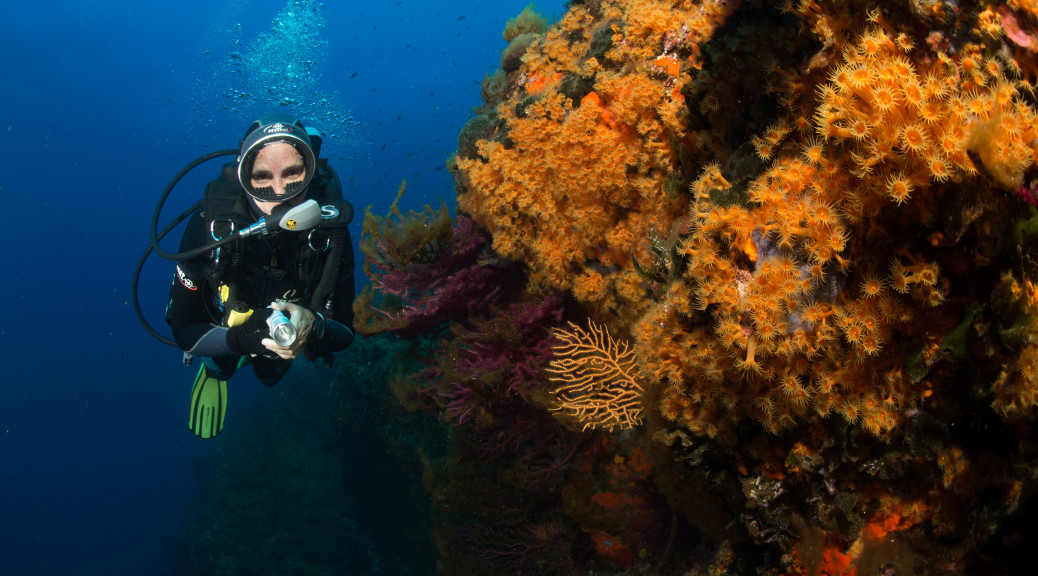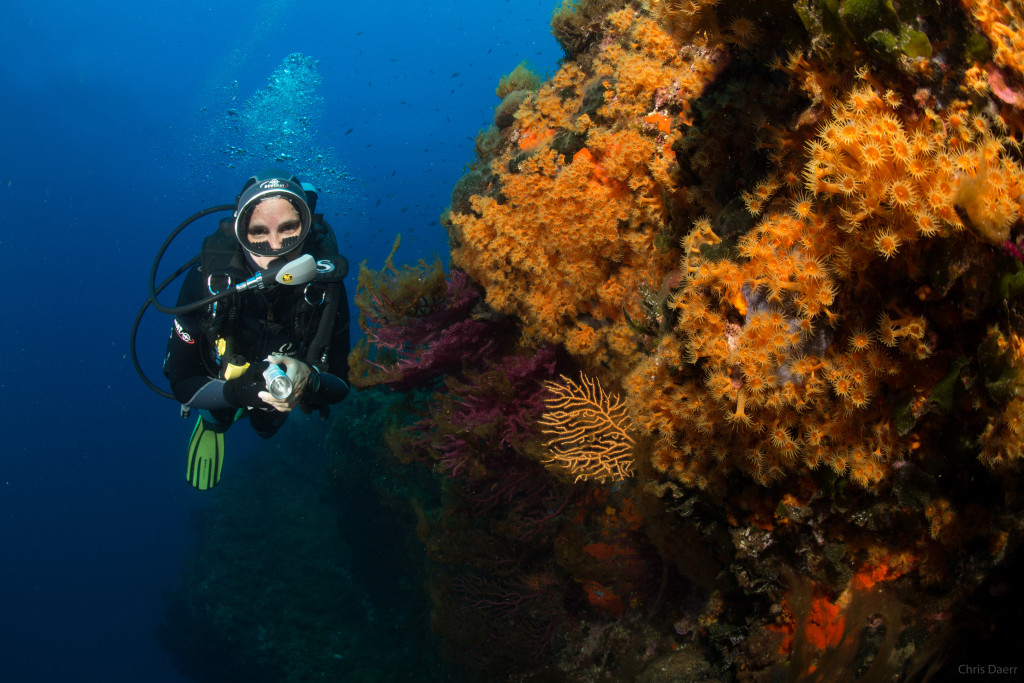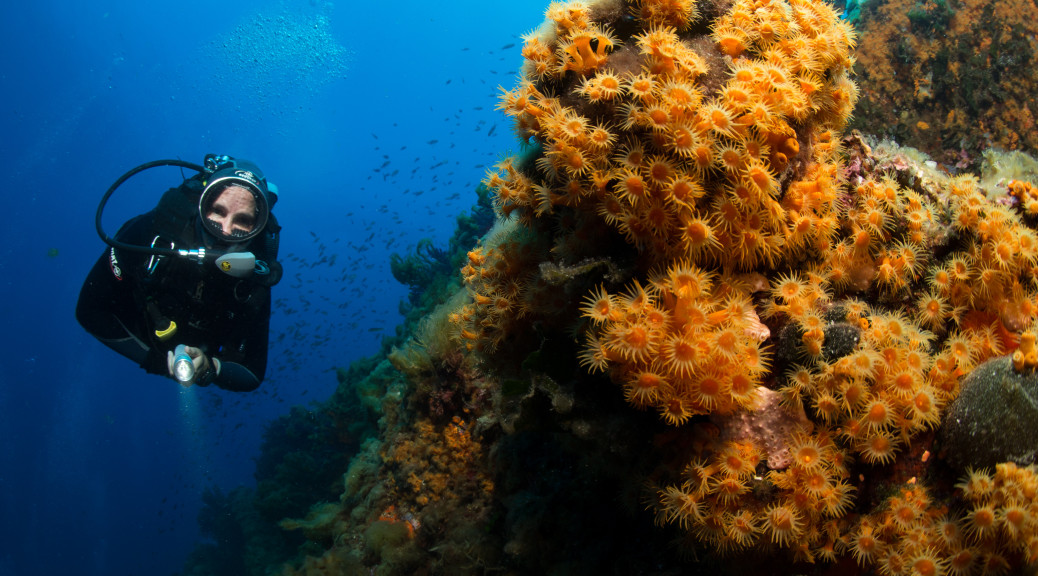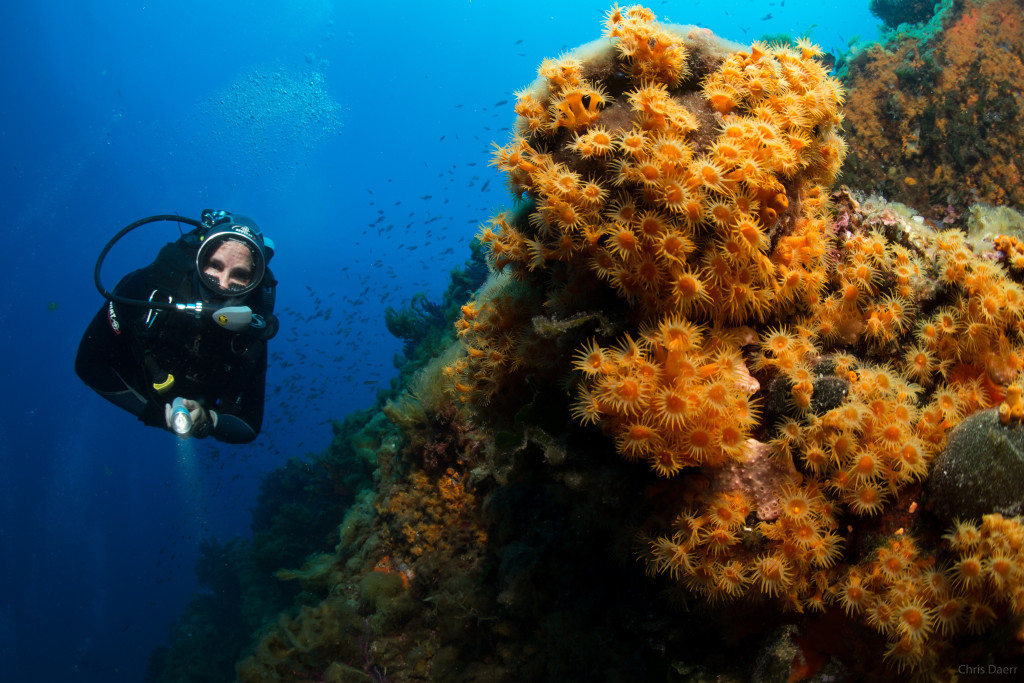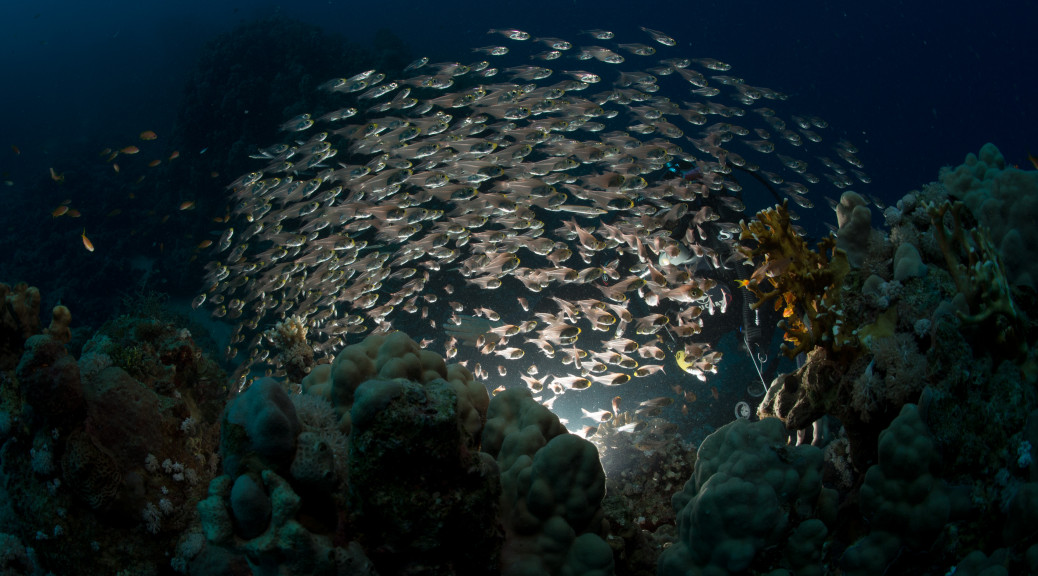This “volcano of fish” was shot in bright sunlight at the house reef of Marsa Shagra Resort, Egypt, in the early afternoon. Wonder how that ‘dark’, mystic look was created?

It’s quite rare under water, that you get too much light into your lens. At the day of this shot though, the amount of Egyptian-mid-day-sunlight was a challenge for the picture above. But lets start at the beginning:
When diving along the northern reef line of the Marsa Shagra house reef, a solitary coral block at about 15m depth caught our eyes. Two schools of juvenile fish where circling around it and didn’t leave the area, even when divers passed by. We also noticed that they made spectacular swarm movements when divers waived their hand or simply swam by. — That triggered the idea of the picture’s scene. But how to go about it?
First, I chose a fisheye lens for the shot, which I think goes well with the ’rounded’ shapes of the swarm’s movement. Secondly, I detached the second flash from the UW housing – ie. no cable connection to the camera, put it into slave-mode and set intensity to about 3/4 power. Then, I positioned it into one of the crevices of the reef. On the master-flash, I reduced power to the smallest possible amount – just enough to trigger the slave. With that, the fish would be illuminated just by the slave-flash from below. In order to trigger the slave-flash, which was ‘dug into a hole’ now, the master flash on the camera needed to be as high above the camera as possible. So the light setup was done.
Next, I needed to get the sunlight out of the picture. With aperture f/16, that was nearly taken care of. In addition, I shortened the exposure to 1/250 – which is actually the sync-time of the flashes used. This helped to turn the background from light blue into the blue/black curtain you see on the picture.
Technically, all set now. – But where are the fish? How to tell them what to do? Well, once more Ylfa did a great job as ‘fish whisperer’ she positioned herself behind the coral block and by waiving or pointing her hands, she was able to ‘direct’ the swarm. – You can actually see her on the picture behind the right side of the swarm. The tricky thing here was to make enough movement to make the swarm move, but not too strong – otherwise the swarm was gone hiding in some small caves in the coral block.
We actually came back two or three times to this spot because we have been so fascinated by these small fish. – And if we have the chance, we’ll revisit Marsa Shagra again in future.
